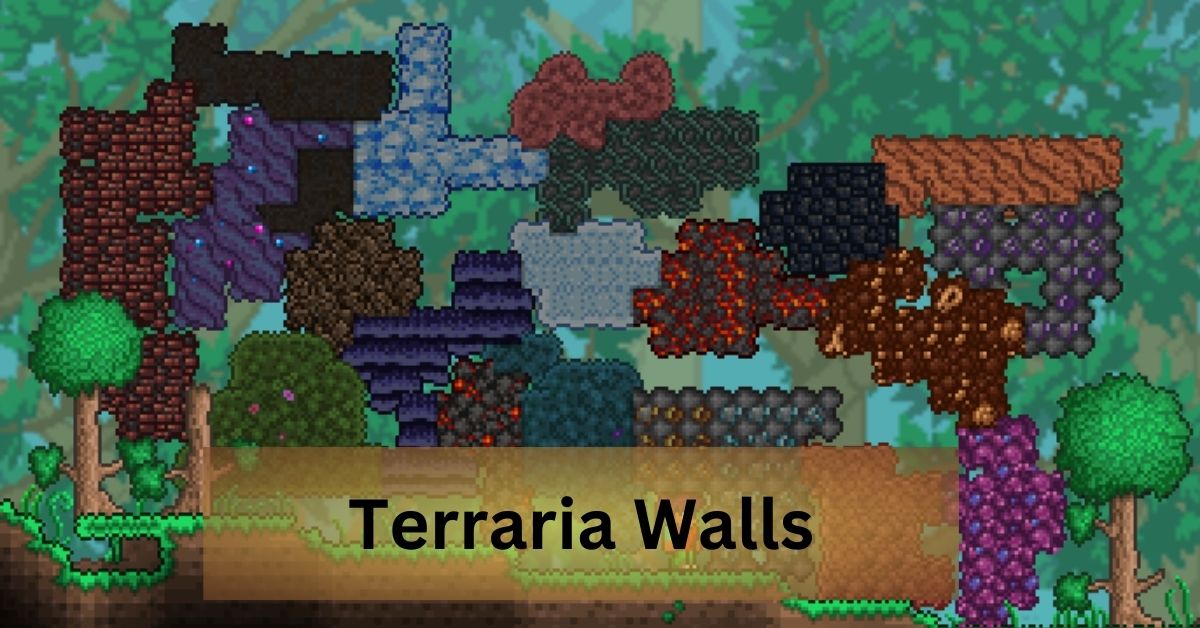Terraria, the popular sandbox adventure game, offers players a vast and immersive world to explore and build in. Walls play a crucial role in shaping the aesthetic appeal, functionality, and safety of structures within the game. In this comprehensive guide, we’ll delve into the various aspects of Terraria walls, from their basic functions to creative uses.
Basic Functions of Walls:
Terraria walls serve several fundamental functions, including providing structural integrity to buildings, preventing enemy spawns, and allowing for the placement of furniture and background items. Understanding the importance of walls in these aspects is crucial for effective and strategic gameplay.
Types of Walls:
Terraria offers a diverse range of wall types, each with its unique appearance and properties. Common wall types include dirt walls, stone walls, wood walls, and more. Exploring the characteristics of each wall type enables players to make informed decisions based on their specific building needs and preferences.
Crafting Walls:
Crafting walls is a simple yet essential aspect of Terraria gameplay. Players can craft walls using various materials such as wood, stone, or clay, depending on the desired aesthetic. Understanding the crafting process and the resources required is key to creating visually appealing and functional structures.
Wall Backgrounds:
Terraria walls have two distinct layers: the foreground, which includes the visible part of the wall, and the background. The background layer adds depth to structures and can be customized with different wallpapers. Exploring and experimenting with various wallpapers allows players to personalize their builds and create unique atmospheres.
Advanced Wall Design Techniques:
In the realm of Terraria architecture, mastering advanced wall design techniques allows players to elevate their building prowess to new heights. This involves delving into the intricacies of layering and combining different wall types to create visually stunning structures.
Layering involves placing walls in a way that creates depth and texture, while the combination of various wall types enables players to achieve a diverse and sophisticated aesthetic.
Experimentation with patterns, gradients, and asymmetry further contributes to the complexity of advanced wall design, providing a canvas for architects to express their creativity in unique and impressive ways.
Walls and Lighting:
The synergy between walls and lighting is a crucial aspect of creating atmospheric and visually appealing environments in Terraria. Understanding how different wall types interact with various lighting sources can drastically impact the mood of a build.
Certain walls may enhance or diffuse the light emitted by torches, lanterns, or other light fixtures.
This section explores the art of using walls to manipulate lighting, creating dynamic atmospheres that change with the time of day or in response to specific events, contributing to the immersive experience of the game.
Interactive Walls:
The concept of interactive walls introduces a new dimension to Terraria building by incorporating moving or animated elements. This involves delving into the game’s wiring and mechanisms to create walls that serve a functional purpose beyond mere aesthetics.
Players can learn to implement doors, gates, or other moving parts seamlessly into their wall designs, adding a dynamic and engaging element to their structures. Understanding how to wire and power these interactive walls opens up a realm of possibilities for inventive and functional designs within the game.
Underground Wall Challenges:
Building walls underground in Terraria presents unique challenges distinct from surface construction. Navigating the natural terrain, dealing with limited visibility, and integrating walls seamlessly with the underground environment are crucial considerations.
This section provides insights into overcoming these challenges, offering tips on efficient wall placement, dealing with unexpected terrain features, and ensuring visibility for both practical and aesthetic purposes in the subterranean landscapes.
Walls for Defense:
In the ever-dangerous world of Terraria, walls can serve a strategic purpose in defense against hostile creatures and powerful boss encounters. This section explores how players can design structures that leverage walls to create effective defensive measures.
Techniques such as creating chokepoints, barriers, and other strategic configurations are discussed, providing players with the knowledge to improve survivability during intense gameplay moments.
Understanding the defensive potential of walls adds a tactical layer to building, making structures not only visually appealing but also functional in the face of adversity.
Enemy Spawn Prevention:
One of the critical functions of walls in Terraria is to prevent enemy spawns within player-built structures. Placing walls around a building creates a safe zone, reducing the risk of hostile creatures invading the living spaces. Understanding the mechanics of enemy spawn prevention ensures a secure and peaceful environment for players.
Creative Uses of Walls:
Walls in Terraria can be used creatively to enhance the visual appeal of structures. Players can experiment with different wall types, patterns, and combinations to achieve stunning designs. Additionally, walls can be used as canvases for intricate paintings, further expanding the creative possibilities within the game.
Integration with Furniture:
Walls play a crucial role in the placement of furniture and decorative items. Understanding how walls interact with furniture allows players to design functional and aesthetically pleasing interiors. Proper integration of walls and furniture enhances the overall ambiance of Terraria structures.
Walls in Biomes:
Different biomes in Terraria may require specific types of walls to maintain the theme and atmosphere. Understanding the appropriate walls for each biome ensures that players can seamlessly blend their structures into the surrounding environment, creating a cohesive and immersive world.
Ethereal Walls and Fantasy Realms:
Venture into the enchanting world of ethereal walls and discover how to create fantastical realms within Terraria. This heading delves into the use of magical and otherworldly wall types, exploring how they can be combined to evoke a sense of mystique and fantasy.
Learn to integrate ethereal walls with other elements such as floating islands, celestial structures, and enchanted gardens to craft dreamlike landscapes.
This section provides insights into selecting the most fitting wall types for a fantasy theme, enabling players to transform their Terraria world into a magical haven where imagination knows no bounds.
Explore the possibilities of ethereal walls to bring a touch of enchantment and wonder to your in-game creations.
Conclusion:
Terraria walls are not just functional components of structures but also key elements in creating visually appealing and strategically effective environments. By understanding the various aspects of walls, players can elevate their building skills, enhance their gameplay experience, and fully immerse themselves in the rich and dynamic world of Terraria.



